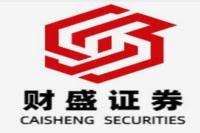Gigawatt-Scale Grid Transformation: Hitachi Energy's Massive German HVDC Project
Meta Description: Hitachi Energy secures a €2 billion+ contract with Amprion to build four HVDC converter stations, bolstering Germany's energy transition. Explore the technological advancements, economic impact, and future implications of this groundbreaking project. Keywords: Hitachi Energy, Amprion, HVDC, High Voltage Direct Current, Germany, Energy Transition, Renewable Energy, Grid Modernization, Converter Station, Power Transmission.
This isn't just another press release; this is a monumental leap forward in Europe's—and indeed the world's—quest for a sustainable energy future. Imagine a project so vast, so technologically advanced, that it requires a multi-billion euro investment and promises to reshape the landscape of power transmission for a nation at the forefront of renewable energy integration. That, my friends, is the story of Hitachi Energy's groundbreaking contract with Amprion, Germany's leading transmission system operator (TSO). This isn't simply about wires and transformers; it's about empowering Germany's ambitious renewable energy targets, bolstering grid stability, and laying the groundwork for a cleaner, more secure energy future for millions. We're talking gigawatt-scale power transmission, sophisticated HVDC technology that's pushing the boundaries of what's possible, and a collaboration that showcases the power of international cooperation in tackling climate change. The sheer magnitude of this €2 billion-plus undertaking demands a closer look. We'll delve into the technical intricacies, analyze the broader economic implications, and explore the far-reaching consequences for the future of energy infrastructure, not just in Germany, but globally. Get ready to be amazed by the innovative solutions and the sheer scale of engineering prowess on display in this transformative project. This isn't just a contract; it's a testament to human ingenuity and our collective commitment to a greener tomorrow. Prepare to be enlightened, informed, and perhaps even inspired by the power of innovation in the face of a global challenge.
Hitachi Energy & Amprion: A Partnership Forging a Greener Future
This colossal €2 billion+ contract awarded to Hitachi Energy by Amprion represents a pivotal moment in Germany's ambitious Energiewende—its energy transition. The project involves the construction of four state-of-the-art HVDC (High Voltage Direct Current) converter stations, crucial components for two new HVDC transmission links. This isn't your grandfather's power grid; we're talking about technology capable of handling massive amounts of renewable energy—think wind farms stretching across the North Sea and solar arrays blanketing vast swathes of land.
The choice of HVDC technology is no accident. Unlike traditional AC (Alternating Current) transmission, HVDC boasts superior capabilities for long-distance, high-capacity power transmission. This is especially critical for integrating renewable energy sources often located far from population centers. Think of it like this: AC transmission is like a bustling city street, prone to congestion and energy losses over distance. HVDC, on the other hand, is a dedicated expressway, efficiently transporting vast amounts of power with minimal losses, even across hundreds of kilometers.
The sheer scale of this project is breathtaking. We're not talking about minor upgrades; this is a complete overhaul of a significant portion of Germany’s electricity infrastructure. The four converter stations will be strategically located to facilitate the efficient integration of renewable energy sources into the national grid.
The Technical Marvels of HVDC Technology
Let's delve deeper into the technological heart of this project: HVDC. This technology is not new, but its application in projects of this magnitude represents a significant leap forward. Here's a breakdown of its key advantages:
- Reduced Transmission Losses: HVDC significantly reduces energy losses during long-distance transmission, maximizing the efficiency of renewable energy integration. Think of it as saving money and the planet simultaneously!
- Enhanced Grid Stability: The inherent stability of HVDC helps to mitigate the intermittency of renewable energy sources, ensuring a more reliable power supply. No more frustrating power outages!
- Asynchronous Grid Connection: HVDC allows for the interconnection of grids operating at different frequencies, expanding the possibilities for cross-border energy exchange and optimizing grid utilization. This is a game-changer for regional energy cooperation.
- Increased Transmission Capacity: HVDC lines can carry significantly more power than equivalent AC lines, making them ideal for handling the increasing demand for electricity. It's like upgrading your internet from dial-up to fibre optic!
Economic Impact and Job Creation
This multi-billion euro project isn't just about clean energy; it's a significant economic driver. The construction phase alone will create thousands of jobs, boosting local economies and supporting the development of specialized skills within Germany's energy sector. Beyond construction, the project will contribute to long-term economic growth by ensuring a stable and reliable power supply, crucial for attracting investment and driving innovation. This isn’t just about powering homes; it’s about powering prosperity.
Furthermore, the increased efficiency of energy transmission will translate into cost savings for consumers and businesses in the long run. A more stable and reliable power grid means fewer disruptions and reduced economic losses associated with power outages.
Environmental Benefits and the Energiewende
The project is intrinsically linked to Germany's ambitious Energiewende, a nationwide effort to transition away from fossil fuels and towards a renewable energy future. By enabling the efficient integration of vast amounts of renewable energy, this project significantly accelerates the progress toward decarbonizing Germany's electricity sector. This is about more than just reducing emissions; it's about securing a sustainable energy future for generations to come.
This initiative also contributes significantly to reducing Germany’s carbon footprint, aligning directly with its commitment to the Paris Agreement and its broader climate goals. It's a shining example of how large-scale infrastructure projects can play a crucial role in mitigating climate change.
The Future of Power Transmission: Beyond Germany
This project isn't just significant for Germany; it sets a precedent for future large-scale renewable energy integration projects worldwide. The technological advancements and the successful implementation of this project will serve as a blueprint for other countries striving to achieve their own ambitious renewable energy targets. This is a global game-changer, demonstrating the feasibility and scalability of HVDC technology for a sustainable energy future. The implications are far-reaching, influencing the design and implementation of future power grids across the globe.
Frequently Asked Questions (FAQs)
Q1: What is HVDC technology and why is it important for this project?
A1: HVDC (High Voltage Direct Current) technology is a more efficient way to transmit large amounts of electricity over long distances compared to traditional AC (Alternating Current). It's crucial for integrating renewable energy sources often located far from population centers.
Q2: What is the estimated cost of the project, and how is it being financed?
A2: The project's total cost exceeds €2 billion. Financing details will likely involve a combination of government subsidies, private investment, and potentially loans from financial institutions. Specific details would need to be sourced from Amprion's financial statements.
Q3: How long will the project take to complete?
A3: Exact timelines aren't publicly available. Major infrastructure projects of this scale typically require several years of planning, construction, and testing.
Q4: What are the potential risks associated with this project?
A4: Potential risks include construction delays, unforeseen technical challenges, and fluctuations in material costs. Careful risk management and contingency planning are crucial for successful project completion.
Q5: What are the environmental impacts of the project?
A5: While the project aims to accelerate Germany's renewable energy transition, construction will involve some environmental impact. Amprion and Hitachi Energy will likely adhere to stringent environmental regulations and implement mitigation measures to minimize this impact. Specific details must be obtained from their environmental impact assessments.
Q6: How will this project benefit the German economy?
A6: The project will create thousands of jobs during construction and operation, stimulate economic growth in related industries, and contribute to a more reliable and affordable energy supply, benefiting both businesses and consumers.
Conclusion
The Hitachi Energy and Amprion partnership represents a significant step towards a sustainable energy future. This €2 billion+ project showcases the power of technological innovation and international collaboration in tackling the challenges of climate change. The successful implementation of this project will not only benefit Germany but also serve as a model for other countries striving to integrate renewable energy sources into their power grids. The scale and ambition of this undertaking are truly inspiring, demonstrating a collective commitment to building a cleaner, greener, and more sustainable world. This isn't just about electricity; it’s about a brighter tomorrow.



